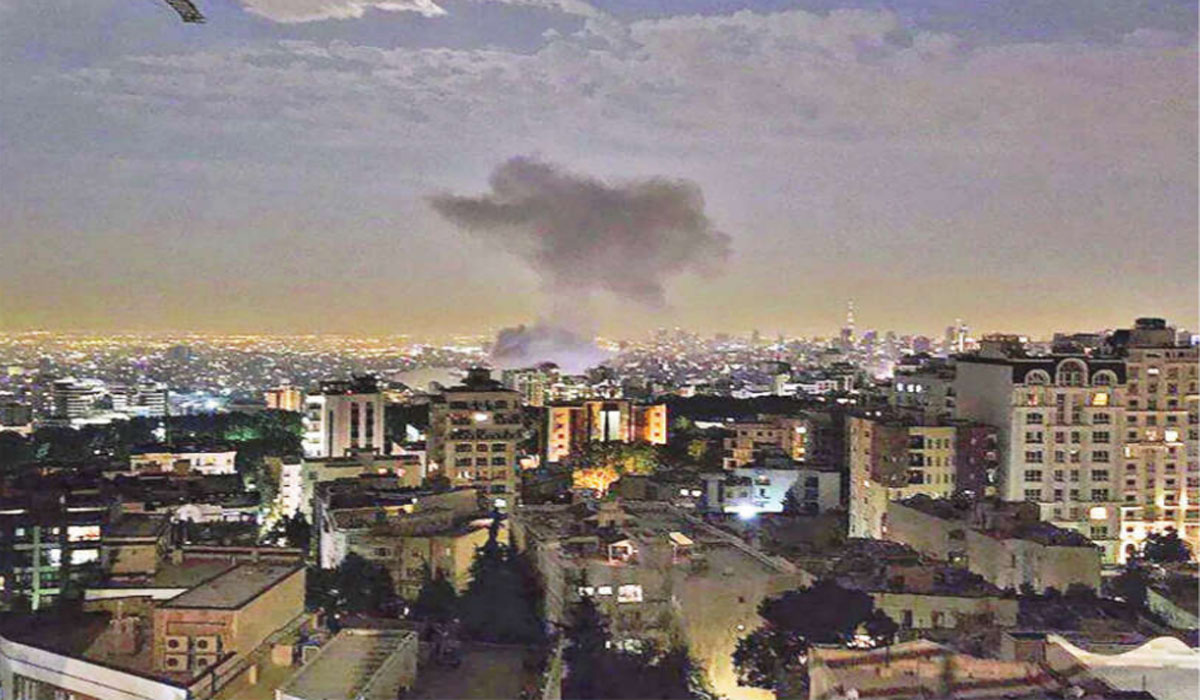
Amid an escalating military confrontation in West Asia, the disparity between Israel and Iran’s economic capabilities is becoming a critical factor in shaping the trajectory and potential outcome of the conflict. While Israeli fighter jets struck high-value military and nuclear targets inside Tehran in the early hours of Friday, Iran’s retaliation, comprising more than a hundred low-cost drones, caused limited damage, underlining not just the technological gap but also the financial gulf between the two rivals.
Iran, already battered by a decade of sanctions, galloping inflation, and dwindling foreign reserves, finds itself on a precarious footing as tensions escalate. Its response to Israel’s airstrikes, which reportedly resulted in the deaths of top military leaders including Army Chief Mohammad Bagheri and IRGC Commander Hossein Salami, was largely symbolic.
The drones launched in response were quickly neutralized, according to Israeli military sources, and failed to cause significant damage. Behind Iran’s military posturing lies an economy in deep distress. Inflation, recorded at 32 percent in January 2025, continues to choke household incomes. Economic projections paint a grim picture, with the International Monetary Fund revising Iran’s real GDP growth for 2025 down to just 0.3 percent, a significant fall from earlier estimates of 3 percent. As food and fuel prices spiral, nearly 27 percent of Iranians now live below the poverty line, surviving on less than two dollars a day.
The freefall of the Iranian rial has only added to the misery. With the currency breaching one million to a single US dollar, real wages have plummeted, reducing the minimum wage to around $120 a month. Such financial fragility severely undermines the state’s ability to fund prolonged military operations.
The Iranian government is already struggling to balance basic governance with its ambitious military build-up, and the prospect of an extended conflict with Israel threatens to push it over the edge. Iran’s foreign exchange reserves, which once stood at a healthy $128 billion in 2015, have now shrunk to just $33.8 billion. These reserves are crucial not only for stabilizing the currency but also for purchasing essential imports, including food and medicine.
In sharp contrast, Israel’s reserves have reached an all-time high of $223.6 billion, affording it a substantial buffer in case of a protracted military engagement. This economic mismatch is starkly reflected in both countries’ defence expenditures. Iran’s military budget, while tripled for 2025 to \$12.7 billion, remains modest compared to Israel’s $45 billion war chest.
Despite devoting 24 percent of its oil exports to military funding, Tehran faces a steep challenge. US-led sanctions continue to hammer its oil economy, with production expected to fall by 300,000 barrels per day this year. Some estimates suggest that exports may shrink even further—by as much as 500,000 barrels daily— leaving Iran even more cash-strapped.
Adding to Iran’s woes is the state of its industrial sector. Around half of its productive capacity in key sectors has been rendered idle, largely due to persistent energy shortages and lack of investment. The regime’s aggressive focus on military build-up comes at a time when basic industries and infrastructure are underperforming, making the push for conflict increasingly unsustainable in the long run. Meanwhile, Israel’s economy, though not immune to the costs of war, continues to show resilience.
The country recorded a growth rate of 3.4 percent in the first quarter of 2025, driven by strong performance in the tech sector and consistent exports. With access to global financial markets and long-standing defence cooperation agreements with the United States and Europe, Israel enjoys a level of economic flexibility that Iran can hardly hope to match. These differences are not just matters of numbers but have strategic implications.
For Tehran, the financial burden of sustaining even a limited military campaign could prove crippling. Domestic unrest is already simmering beneath the surface, fuelled by rising unemployement and widespread dissatisfaction with the government’s prioritisation of military ambitions over social welfare. Iran’s limited room to manoeuvre on the global stage also hampers its strategic options.
It relies heavily on China for oil sales and on Russia for military technology—partnerships that are themselves under strain due to shifting geopolitical equations. Should US-led pressure on these partners increase, Iran may find itself even more isolated. In contrast, despite occasional tensions between Israeli leadership and US officials, the broader security alliance between the two countries remains intact and robust. While Iran may continue to pursue what it calls a “resistance economy,” the hard reality is that the country’s structural weaknesses are being laid bare as conflict with Israel intensifies.
Without immediate sanctions relief, which looks unlikely—or a radical change in the stance of regional powers such as Saudi Arabia or the UAE, Tehran’s ability to wage and sustain a conflict remains severely constrained. As both nations dig in for what may turn into a prolonged and dangerous confrontation, the battlefield is not just in the skies over Tehran or the deserts of Israel. It is also in balance sheets, inflation charts, and oil production data—places where Iran’s vulnerabilities could eventually define the limits of its military ambitions.
